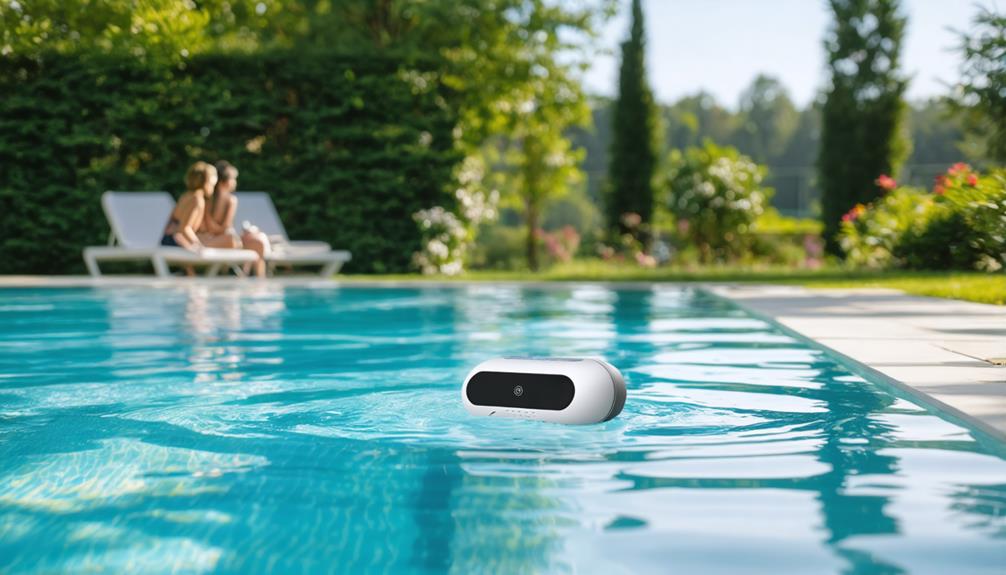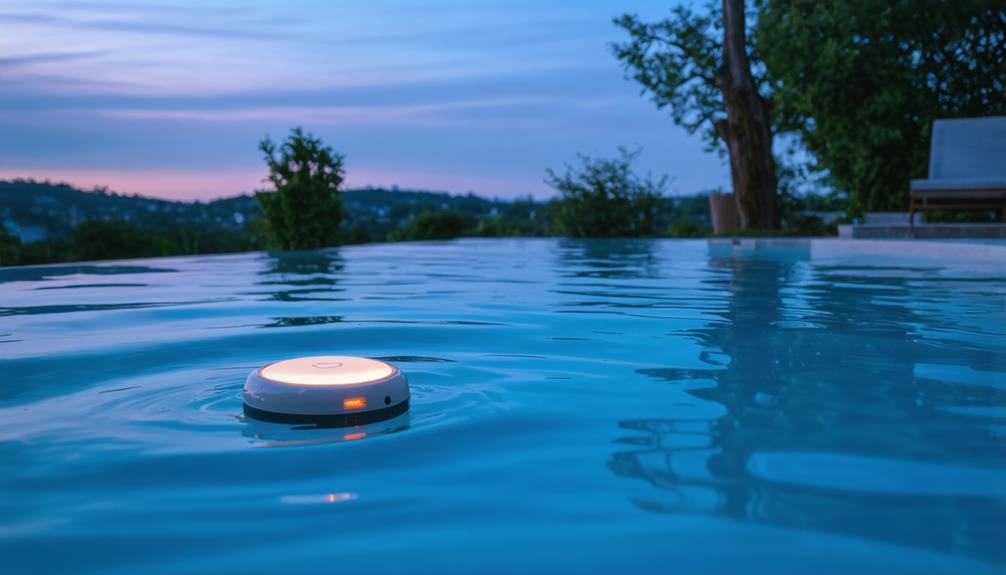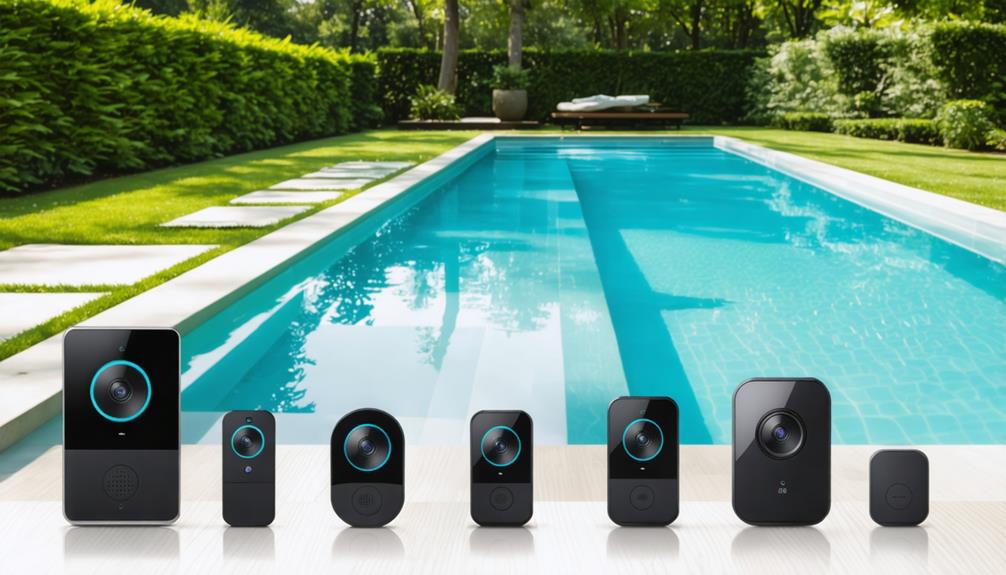
Brainstorm Security Shop

For Orders Over $99

On Any Of Our Products

Details On Refund Page

In the realm of aquatic safety, a pool safety alarm emerge as a crucial yet often overlooked component in preventing accidental drownings. These devices, utilizing cutting-edge sensor technology, are designed to provide real-time alerts for any unexpected water activity or unauthorized access, especially safeguarding young children. As many regions enforce strict regulations regarding pool safety, understanding the various types and functionalities of these alarms becomes imperative. But what differentiates one pool alarm from another, and how does one navigate the options to ensure optimal protection? The answer lies in exploring the nuances of their operation and benefits.
A comprehensive understanding of pool safety alarms is essential for ensuring the protection and well-being of individuals, particularly children, around swimming areas. Pool safety alarms serve as critical tools in preventing accidents and enhancing the safety of aquatic environments. Adhering to pool regulations, which often mandate the installation of such safety devices, is crucial for compliance and peace of mind. These regulations are designed to minimize risks by ensuring that effective monitoring systems are in place.
Alarm features vary considerably, encompassing a range of functionalities tailored to different pool settings and user needs. Key features include sensitivity adjustments, which allow users to calibrate the alarm according to specific water disturbances, such as waves or debris. This adaptability is vital for reducing false alarms while maintaining high alertness levels.
Additionally, many pool safety alarms are equipped with remote notifications, enabling real-time alerts to be sent directly to a caregiver’s smartphone or other devices. This feature ensures immediate response capabilities, even when the pool area is not directly supervised.
Incorporating cutting-edge technology and adhering to established pool regulations, pool safety alarms remain a central component in safeguarding swimming environments against unforeseen incidents.
Understanding the various types of pool safety alarms is fundamental to selecting the appropriate system for any given aquatic setting. Pool safety alarms are designed to alert homeowners or pool operators of potential unauthorized or accidental entries into the pool area, playing a crucial role in preventing drowning incidents.
The diversity of available alarms caters to different needs, ranging from detecting surface disturbances to monitoring perimeter breaches.
1. Floating Alarms: These devices are placed directly on the water’s surface and are sensitive to waves or disturbances. When the water is agitated beyond a set threshold, the alarm is triggered, notifying those nearby of potential danger.
Floating alarms are particularly effective in identifying unexpected entries by children or pets.
2. Perimeter Alarms: Installed around the pool’s boundary, these alarms create an invisible barrier using infrared or laser technology. If this barrier is breached, the system emits an alert.
Perimeter alarms are ideal for larger pools or settings where monitoring the entire area is critical.
3. Wearable Devices: These are typically used for children and can be worn as wristbands or other personal accessories. Wearable devices activate an alarm when submerged, providing an immediate alert to guardians or caregivers.
They offer a personalized approach to pool safety, ensuring specific individuals are closely monitored.

Pool alarms operate through a combination of sensors and alert mechanisms designed to detect unauthorized access or unexpected activity in the pool area. These systems employ advanced alarm technology to provide effective monitoring and safety assurance. Typically, pool alarms can be categorized based on the types of sensors they use, such as surface wave sensors, subsurface disturbance sensors, or infrared motion detectors. Each type of sensor is engineered to recognize specific activities or disturbances within or around the pool, triggering an alarm to alert homeowners or security personnel.
Alarm technology has evolved significantly, allowing for integration with smart home monitoring systems. This integration enhances the alarm’s ability to provide real-time notifications through various channels, such as mobile apps or home automation systems, ensuring immediate awareness of any potential threats. Below is a table illustrating different sensor types used in pool alarms and their respective functions:
| Sensor Type | Function |
|---|---|
| Surface Wave Sensors | Detects water surface disturbances |
| Subsurface Sensors | Monitors underwater movements |
| Infrared Motion Sensors | Detects movement around the pool perimeter |
Understanding how pool alarms work is crucial for selecting the right system that suits specific needs, ensuring optimal safety and peace of mind. Such systems exemplify how technology can be harnessed to enhance residential security effectively.
Pool alarms play a crucial role in enhancing drowning prevention by providing an immediate alert when unexpected activity is detected in the water.
As a cost-effective safety solution, these devices offer peace of mind to pool owners without the need for extensive financial investment.
A significant advancement in water safety is the implementation of pool alarms, which serve as a crucial tool in enhanced drowning prevention. With alarming drowning statistics highlighting the need for improved safety measures, pool alarms have emerged as an effective solution to mitigate risks.
These alarms are designed to detect any unexpected entry into the water, providing an immediate alert to caregivers and enhancing overall safety. Compliance with safety regulations has become increasingly important, and pool alarms offer a proactive approach to meeting these standards while safeguarding lives.
The benefits of pool alarms in drowning prevention can be summarized as follows:
Pool alarms undeniably play a pivotal role in enhancing drowning prevention strategies.
In the realm of water safety, many recognize pool alarms as a cost-effective solution that offers substantial benefits without imposing excessive financial burdens on property owners. These devices provide an essential layer of protection by alerting homeowners to unauthorized access or accidental falls into the pool. Pool alarms encompass a range of affordable options, each designed to enhance safety measures while remaining financially accessible. Their integration into pool safety systems ensures that property owners can maintain high safety standards without excessive expenditure.
Pool alarms boast numerous safety features that cater to diverse needs, from perimeter alarms to surface wave detection systems. These devices are engineered to detect disturbances in the water or around the pool area, promptly notifying homeowners of potential hazards. As such, they play a crucial role in preventing accidents, especially in households with children or pets.
| Feature | Benefit |
|---|---|
| Affordable Options | Accessible to a broad range of users |
| Surface Detection | Alerts on water disturbances |
| Perimeter Alarms | Monitors unauthorized access |
| Easy Installation | Minimal setup costs and effort |
Ultimately, investing in a pool alarm system is a prudent decision, offering peace of mind and safety without compromising financial resources.

When selecting the ideal pool alarm, it is crucial to consider various factors that ensure both efficiency and reliability. One of the primary considerations is the range of alarm features offered by the device. These features could include motion detection, water surface disturbance sensors, and remote notifications, which enhance the alarm’s capability to provide timely alerts.
Evaluating user reviews is also essential, as they provide insights from other consumers regarding the performance, durability, and reliability of the alarm in real-world situations. Users often highlight both the strengths and potential shortcomings, guiding new buyers in making informed decisions.
To assist in choosing the right pool alarm, consider the following factors:
Proper installation and regular maintenance of pool safety alarms are crucial to ensure their effectiveness.
Begin by following the manufacturer’s easy installation steps, which typically require minimal tools and expertise.
Once installed, establish a routine maintenance schedule to test and clean the alarm, ensuring it remains in optimal working condition.
Installing a pool safety alarm embodies a blend of precaution and simplicity that ensures a secure swimming environment. The process is accessible, even for those favoring a DIY installation approach, and places focus on strategic alarm placement to maximize effectiveness.
By following the steps below, homeowners can effortlessly enhance the safety of their pool area.
This careful positioning enhances the alarm’s ability to detect unauthorized access or accidental falls.
Following these straightforward steps will help establish a reliable safety system around your pool, contributing to peace of mind and a safer swimming experience.
Maintaining a pool safety alarm is crucial to ensure its reliability and effectiveness over time. Regular inspections should be conducted to identify any potential issues, such as damage or wear to the equipment.
Alarm testing should be performed periodically to confirm that the system is functioning as intended. This includes ensuring that all components, such as sensors and alarm units, are operational.
Seasonal maintenance is another essential aspect of keeping your pool safety alarm in optimal condition. Equipment checks before and after each swimming season help to identify any necessary repairs or adjustments.
Battery replacement is a critical part of this process, as a depleted battery can compromise the alarm’s functionality. It’s advisable to replace batteries at least once a year to guarantee continuous operation.
Compliance checks are necessary to ensure that the alarm system meets all relevant safety standards and regulations. This may involve consulting with professionals to confirm that the installation and maintenance practices are up to code.
User training is also important; all users should be familiar with how to operate and test the alarm.
Lastly, sensor calibration is needed to maintain accuracy and responsiveness, ensuring the alarm activates appropriately in case of emergencies.
Integrating smart technology with home automation systems is increasingly feasible. Many devices now offer compatibility with smart home networks, enabling seamless control and monitoring through centralized platforms, enhancing both convenience and security within the domestic environment.
Compliance with local regulations and adherence to safety standards are crucial aspects of ensuring any safety device meets mandatory requirements. It is imperative to verify that such devices align with jurisdiction-specific safety standards to maintain legal conformity.
Warranty coverage for such devices generally varies by manufacturer, often ranging from one to three years. This ensures protection against defects, enhancing alarm longevity and providing reassurance to consumers regarding the product’s reliability and functionality.
Alarm types generally alert users through audible sirens or visual signals when triggered. Installation tips include ensuring the alarm is securely mounted and properly configured to maximize effectiveness and minimize false alarms, thus ensuring timely notifications.
Yes, advancements in alarm technology have led to the development of devices specifically aimed at pet drowning prevention. These specialized alarms are designed to detect small movements and weight differences, offering enhanced safety measures tailored for pets.
Pool safety alarms serve as a critical component in drowning prevention strategies, particularly for safeguarding children. These devices, encompassing types such as floating alarms and wearable sensors, utilize advanced technology to detect unauthorized access or unexpected disturbances in water. They act as an effective complement to existing safety measures, including fences. Compliance with local regulations often necessitates their use, underscoring their importance. Proper selection, installation, and maintenance of pool alarms ensure enhanced safety and offer peace of mind in aquatic environments.
Brainstorm Security Shop
1867 Caravan Trail
Ste 105
Jacksonville, FL 32216
Call us toll free: (800) 859-5566